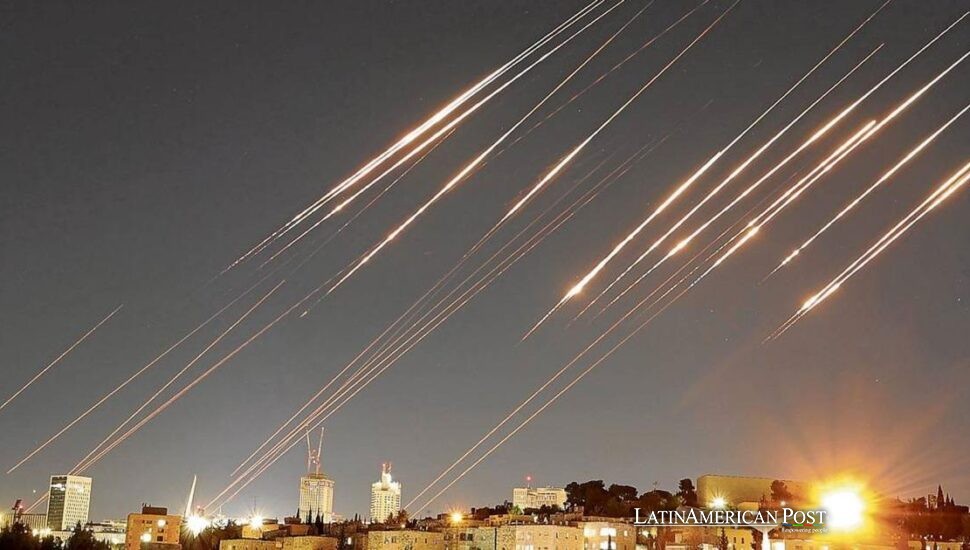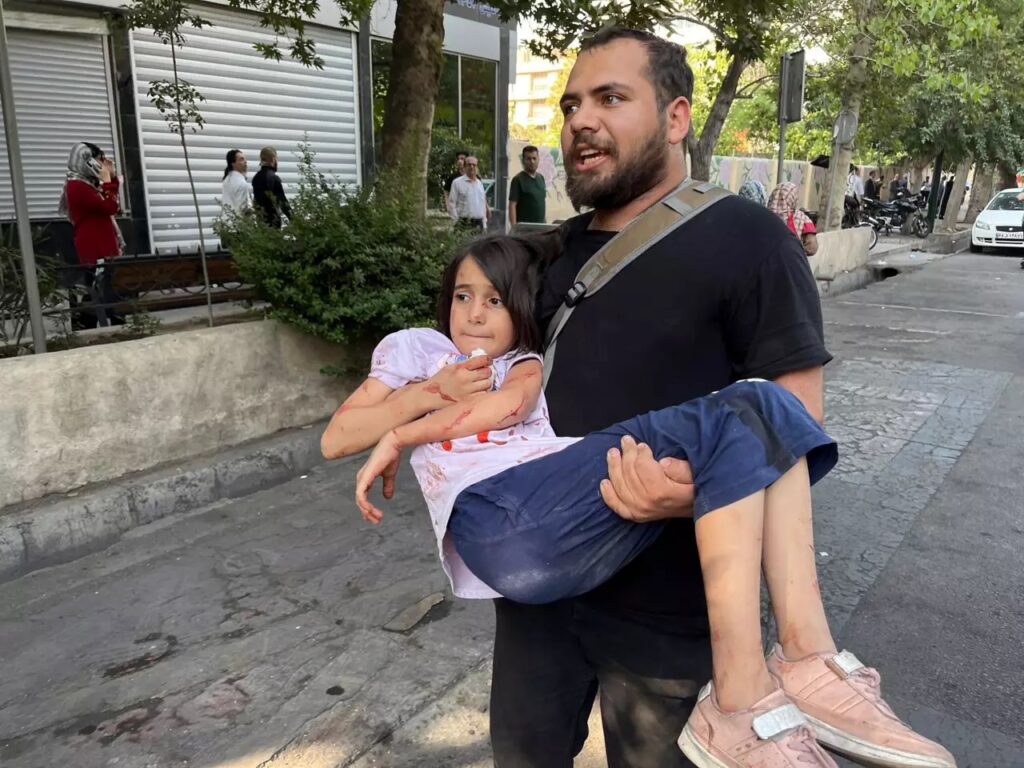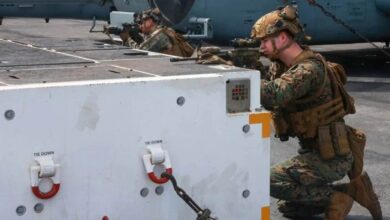Why Latin America Feels Shockwaves as Iran and Israel Trade Fire

Seven days of missile duels between Israel and Iran have already shaken Latin American diplomacy, energy markets, security planning, and diaspora relations. From Buenos Aires synagogues to Caracas refineries, the region must navigate distant explosions that reverberate loudly across its fault lines.
Fault Lines of Allegiance: The Diplomacy of Distance
It began as a confrontation over ancient rivalries and nuclear red lines—but the missiles didn’t need to land in Latin America to leave a mark.
Across the region, from the Palacio do Planalto to Casa Rosada, foreign ministries scrambled to respond urgently but not unanimously. Old alignments reawakened like tectonic plates shifting under diplomatic feet.
In Mexico, President Andrés Manuel López Obrador, as if reciting a catechism, called again for “non-intervention.” Yet behind closed doors, additional police were quietly posted near the Israeli and Iranian embassies. Brazil’s Lula, who just months ago offered himself as a peace broker between Russia and Ukraine, denounced the strikes as “madness” but stopped short of picking a side. His foreign minister flew to New York for emergency UN consultations. At the same time, Brasília kept President Isaac Herzog’s upcoming visit on schedule, citing Embrapa’s urgent drip-irrigation pact for drought-stricken Maranhão.
Elsewhere, the rhetoric was less veiled. Colombia’s Gustavo Petro called it “Zionist militarism,” and Venezuela’s Nicolás Maduro labeled Iran “a victim of Western schemes.” Their words struck a familiar chord across the Bolivarian bloc, where Tehran is often cast as a brother-in-arms against imperialism.
But for all the noise, pragmatism reigned. Israel remains a vital cybersecurity, agriculture tech, and military hardware provider to countries like Mexico, Brazil, and Colombia. Iran, for its part, fuels economies in crisis—its credit lines keep diesel flowing into Nicaragua and Venezuela.
And in the middle walks Brazil, a diplomatic giant with a fragile balance. Backing Israel too forcefully could estrange its growing Muslim constituencies and destabilize ties with Arab trade partners. But openly defending Iran risks losing access to Israeli tech and rattling relations with Washington.
As one foreign ministry official in Brasília told EFE:
“This is not a war we chose—but it could choose us if we’re not careful.”
Boom, Barrel, and Backlash: The Energy Tremor Reaches Port
As the missiles flew, the price of oil soared. The Strait of Hormuz—a lifeline for a fifth of the world’s crude—suddenly felt precarious. In the first week alone, Brent crude surged 15 percent, sending economists across Latin America into late-night calculations.
It didn’t matter that Brazil and Mexico are net exporters. Their refineries still import Middle Eastern light blends to process the heavier grades pumped domestically. At Petrobras, every five-dollar spike in Brent translates into more than 500 million reais in monthly losses downstream.
In Guatemala, the Chamber of Commerce warned of a 9% rise in petrol prices within weeks, just as El Niño has already made food more expensive. Haiti, where public transport hikes have historically sparked riots, begged the Inter-American Development Bank for fuel credits. In the Caribbean, micro-states that depend on Venezuelan oil via Petrocaribe now fear their shipments may be rerouted to Asia, where conflict premiums offer Maduro a more tempting margin.
The irony? Venezuela stands to gain—for now. With U.S. sanctions relief set to expire, Maduro’s calculus is simple: higher global prices could earn him breathing room. But any hint that Caracas is channeling profits to Iranian proxies could backfire spectacularly, triggering a reversal in Washington.
Colombia’s Ecopetrol and Petrobras would be natural replacements for hemispheric gaps, but both face constraints: guerrilla sabotage in Colombia and environmental lawsuits in Brazil’s Amazon delta.
Then there’s the sea itself. Maritime insurers hiked premiums for ships docking at Gulf ports, forcing Latin American exporters to pay more. Brazil’s soy ships now face added freight costs on the return leg, where they typically haul fertilizer from Oman and Qatar. Argentina’s YPF fears LNG costs will spike—bad timing, as winter heating season looms and the Vaca Muerta pipeline remains incomplete.
Even oil-rich nations can’t escape the fallout. Energy is global. So are its ruptures.

EFE
Faith and Fear: Diasporas Pulled into the Crossfire
In the cafés of Buenos Aires, the tailors of Patronato, and the bakeries of São Paulo’s Bom Retiro, the war is being watched with concern and a profoundly personal unease. Latin America is home to more than 500,000 Jews and around 8 million citizens of Arab descent—including the largest Palestinian diaspora outside the Middle East.
And when distant wars ignite, these communities often catch themselves in the local fire.
Telegram channels linked to Hezbollah published home addresses of rabbis in Argentina and Uruguay, prompting urgent calls for protection. Synagogues requested extra patrols. Meanwhile, in Santiago, pro-Palestinian student marches snaked through Levantine neighborhoods, some daubed with anti-Semitic graffiti, forcing Interior Minister Carolina Tohá to mediate between outraged Jewish leaders and campus activists.
But today’s tensions have a new accelerant: disinformation.
A fake video—created by AI—falsely showing Israeli drones bombing an Iranian orphanage spread across Brazilian WhatsApp groups like wildfire. Another TikTok post claimed Mossad agents had been arrested in Bogotá; the footage was a Colombian police drill from 2019, recycled by Venezuelan bot networks.
As Natalia Leal, a digital-policy expert, warned:
“We’re witnessing a new wave of ethnic scapegoating that moves faster than fact-checking can.”
Governments are scrambling. Cyber-security bills that had languished in legislative limbo have suddenly been revived. However, human rights groups warn of overreach: one bill in El Salvador could criminalize online dissent if labeled “destabilizing.”
The flashpoints stretch beyond screens. UNAM, Mexico’s top university, postponed a conference on the Abraham Accords after students threatened blockades. In Buenos Aires, clashes erupted between groups chanting “Iran resists” and others waving Israeli flags.
Back in 2006, similar tensions flared during the Hezbollah–Israel war. But this time, digital echo chambers amplify each voice, each rumor, each fear.
And fear is contagious.
Radars, Drones, and Ghosts of the Past: The Security Front Awakens
The memory is never far. Buenos Aires, 1992 and 1994—bombs ripped through the Israeli embassy and the AMIA Jewish center, killing scores. Investigations pointed to Iranian-linked networks. The scars remain.
Now, two decades later, Argentina’s Security Minister Patricia Bullrich has reactivated the “Jerusalén Protocol,” first drafted after the Pittsburgh synagogue shooting in the U.S. Undercover agents now patrol Jewish schools. Surveillance has ramped up around religious sites.
Brazil, too, has shifted posture. The justice ministry ordered intelligence reviews of Islamic cultural NGOs following alerts about cryptocurrency flows linked to Iranian “sleeper” entities.
In Colombia, an inter-agency task force is studying whether Hezbollah operatives could use the Darién Gap migrant corridor to reach the U.S. In Panama, officials agreed to share radar data with the Israeli navy, a gesture of hemispheric alignment against non-state actors.
But securitization comes with risk. In Paraguay, customs agents recently blocked a shipment of medical equipment headed for Gaza, citing “dual-use” concerns—even though it was sent by Doctors Without Borders. Critics fear a growing tendency to treat humanitarian aid as suspect.
Meanwhile, the region’s military shopping lists are changing. Peru, long searching for a replacement for its Mirage jets, is now eyeing Israeli radar-integrated drones. Chile’s navy signed a memorandum with Rafael Systems to deploy Iron Dome coastal batteries to shield copper ports from potential threats.
Israel, already Latin America’s third-largest arms supplier, may see its footprint expand further.
But the other side is watching, too. Bolivia’s socialist government announced exploratory talks with Iran’s Aerospace Industries Organisation to co-produce surveillance drones for coca-growing zones. Washington is alarmed—analysts at the Wilson Center warn that any deepened military tech alliance with Tehran could trigger secondary U.S. sanctions, threatening Bolivia’s lithium exports.
Every choice is a chess move. Every move draws eyes from abroad.
A Hemisphere Jostled by Missiles a World Away
It has been one week—just seven days—yet Latin America’s inner architecture—its diplomacy, supply chains, campuses, ports, and diasporas—has felt the tremor of a conflict 11,000 kilometers away.
The war has not crossed oceans with bombs or boots. It has arrived through barrel prices, social media, synagogues, sanctions, and satellite data. It has cracked open old divides and revealed new vulnerabilities.
Whether the missiles stop or escalate, one lesson is clear: distance no longer equals safety.
If the region can respond with unity—through a CELAC fuel reserve or an OAS cyber-resilience pact—it may reclaim some agency in a world where conflict is contagious. If not, external actors will continue to play chess across its map, one crisis at a time.
Also Read: Ecuador Must Deny Soldiers’ Impunity for Killing Guayaquil Children
For now, Latin America watches the night sky over the Levant, knowing that every streaking warhead might redraw not just borders abroad but also allegiances, vulnerabilities, and destinies at home.
Because in an interwoven world, foreign wars never stay foreign for long.





